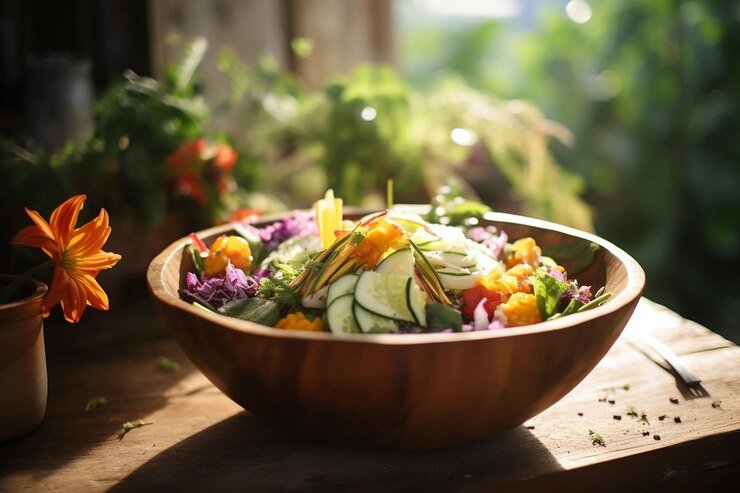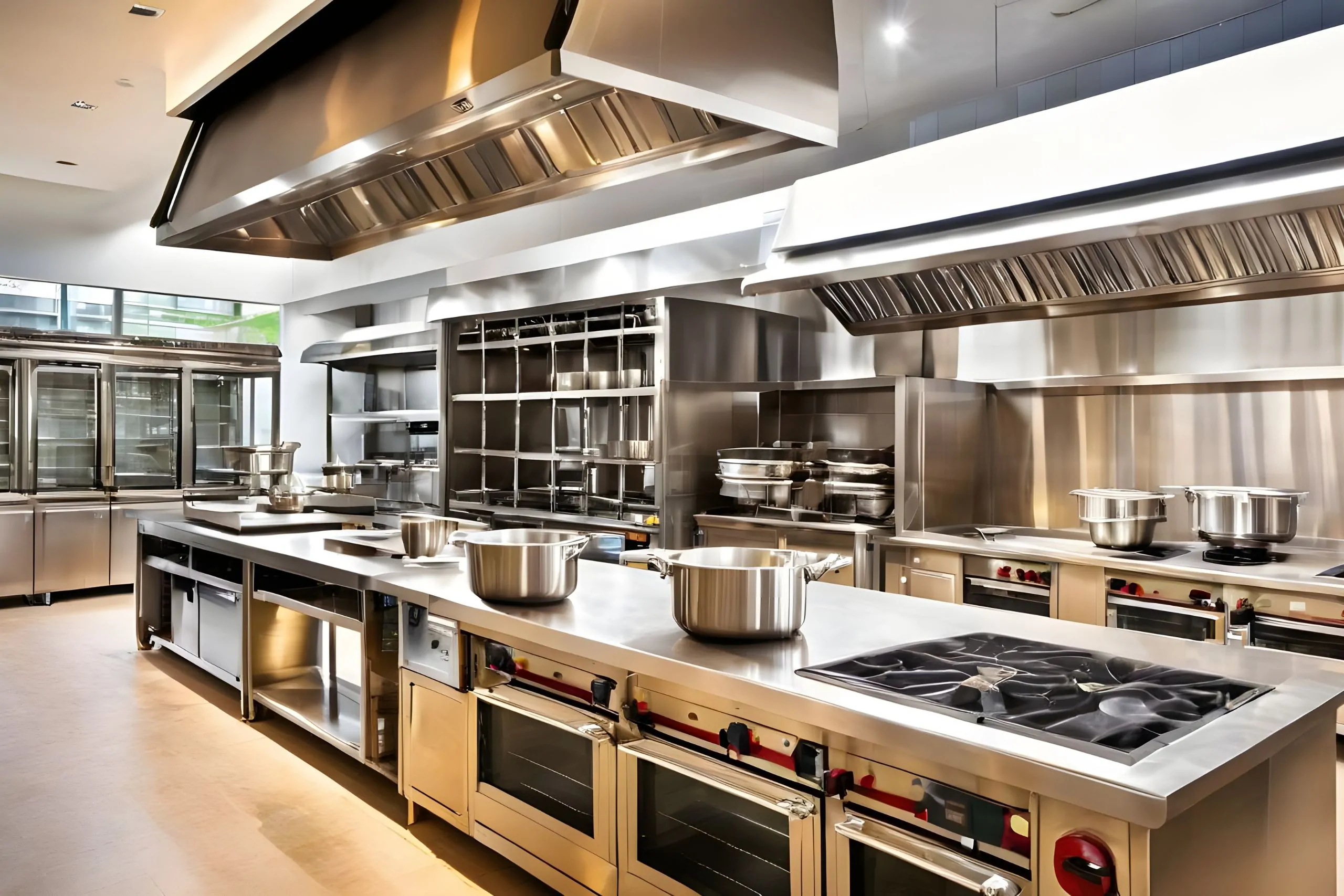Kitchen
Nambe Bowl Your Perfect Salad Bowl

Nambe is a renowned brand known for its unique blend of artistry and function. Over the years, Nambe has created a collection of iconic designs, but one of its most popular and recognizable items is the Nambe bowl. These bowls are celebrated not only for their striking aesthetics but also for their versatility in everyday use. Whether you’re looking for a decorative centerpiece or a functional serving dish, a Nambe bowl offers the perfect blend of both.
What is a Nambe Bowl?
A Nambe bowl is crafted from Nambe’s proprietary alloy, which gives it a unique silvery finish and remarkable durability. The material combines eight different metals, which gives it an unmistakable shine and the ability to retain both heat and cold. This makes Nambe bowls ideal for serving everything from cold salads to warm soups, all while maintaining their temperature.
Each bowl is a result of careful handcrafting, ensuring that no two pieces are exactly alike. Nambe bowls are known for their sleek, modern design and their ability to elevate any table setting with elegance and sophistication.
A Blend of Art and Functionality
One of the primary appeals of Nambe bowls is their dual purpose as both functional items and works of art. These bowls aren’t just for serving; they’re statement pieces that can enhance the aesthetics of your dining space or living room. Many people use them as decorative centerpieces, adding flowers or other elements to create a beautiful table display.
Nambe’s focus on contemporary design means that their bowls often feature organic, flowing shapes that are inspired by nature. This design philosophy makes Nambe bowls timeless—they fit seamlessly into both modern and traditional homes, offering a versatile style that remains relevant for years.
Types of Nambe Bowls
Nambe offers a variety of bowls, each designed to cater to different needs. Here are some of the most popular types:
1. Classic Nambe Alloy Bowls
These bowls are perhaps the most well-known of the Nambe collection. They come in various sizes and shapes, including round, square, and asymmetrical designs. Made from Nambe’s signature metal alloy, these bowls are perfect for serving both hot and cold dishes due to their excellent thermal properties.
2. Nambe Wood and Alloy Bowls
Incorporating both metal and wood, these bowls bring a touch of warmth to the sleek alloy designs. The wooden elements, often made from rich acacia or maple, provide a striking contrast to the silvery shine of the metal. These bowls are perfect for rustic or earthy décor themes, and they are ideal for serving salads, pasta, or fruits.
3. Nambe Glass Bowls
Nambe also offers bowls made from high-quality glass, often combined with their signature metal alloy bases or accents. These glass bowls are ideal for showcasing colorful dishes, as the transparency of the glass allows for a full view of the contents. They are great for fruit displays, salads, or serving cold dishes.
4. Nambe Serving Sets
Beyond individual bowls, Nambe also offers serving sets, which often include multiple bowls of varying sizes and matching utensils. These sets are ideal for larger gatherings or special events, where having a cohesive look across serving pieces is important.
The versatility of Nambe Bowls
Nambe bowls are designed to be as versatile as they are beautiful. Here are some ways you can use a Nambe bowl in your home:
- Serving Dishes: Thanks to their ability to retain temperature, Nambe bowls are perfect for serving hot or cold food. Whether it’s a chilled salad or a warm dish straight out of the oven, these bowls help maintain the perfect serving temperature.
- Decorative Centerpieces: Nambe bowls are so visually appealing that they often serve as decorative centerpieces. You can leave them empty on your table for a minimalist look or fill them with fruits, flowers, or even seasonal décor.
- Gift Items: A Nambe bowl makes for an excellent gift, whether it’s for a wedding, housewarming, or special occasion. Its combination of artistry and functionality makes it a timeless present that the recipient can enjoy for years to come.
Caring for Your Nambe Bowl
To keep your Nambe bowl looking its best, proper care is essential. While Nambe alloy is known for its durability, there are specific cleaning guidelines to follow:
- Handwashing: It’s recommended to hand wash your Nambe bowl with mild soap and water. Avoid putting it in the dishwasher, as the harsh detergents and high heat can damage the finish over time.
- Polishing: Over time, your Nambe bowl may develop a natural patina, which adds to its character. However, if you prefer to maintain its original shine, Nambe offers a polish specifically designed for their metal alloy. Regular polishing will keep the bowl looking as good as new.
- Avoid Direct Heat: While Nambe bowls can retain heat, avoid placing them directly on stovetops or in ovens at very high temperatures. Instead, use them for serving food that has already been prepared.
Why Invest in a Nambe Bowl?
A Nambe bowl is more than just a functional serving dish; it’s an investment in quality, craftsmanship, and timeless design. Here are a few reasons why a Nambe bowl is worth adding to your home:
- Longevity: Nambe bowls are incredibly durable and are designed to last for decades with proper care. This makes them a worthwhile investment that can be passed down through generations.
- Versatility: Whether you’re hosting a formal dinner or enjoying a casual meal, Nambe bowls fit the occasion. They effortlessly transition between functional and decorative uses.
- Aesthetic Appeal: Nambe’s modern, sleek designs make their bowls a beautiful addition to any home. Whether you favor minimalist décor or a more eclectic style, a Nambe bowl complements a wide range of aesthetics.
- Cultural Significance: Nambe is a brand with a rich history of craftsmanship. Based in New Mexico, the company has been producing award-winning designs since 1951. Owning a Nambe bowl is like owning a piece of design history.
Conclusion
The Nambe bowl is a true masterpiece of form and function, offering both practical utility and artistic beauty. Whether you’re serving a meal, decorating your home, or giving a thoughtful gift, a Nambe bowl stands out as a timeless and versatile option. With its unique alloy material, handcrafted designs, and enduring appeal, a Nambe bowl is more than just a kitchen accessory—it’s a statement piece that elevates any space.
BUSINESS
Kellton Tech Share Price Target 2025 Analysis

The rapid evolution of the technology sector has made it one of the most lucrative fields for investors. Among the promising companies in this domain, Kellton Tech Solutions stands out as a major player offering innovative digital solutions. For investors, the question of Kellton Tech share price target for 2025 has become a topic of significant interest. With its strong market presence and focus on digital transformation, understanding the company’s growth trajectory is essential for potential stakeholders.
An Overview of Kellton Tech Solutions
Kellton Tech is a global IT solutions provider specializing in cutting-edge technologies such as digital transformation, Internet of Things (IoT), blockchain, and enterprise resource planning (ERP). With its headquarters in India and a global footprint across North America, Europe, and Asia-Pacific, Kellton Tech has successfully catered to diverse industries like retail, healthcare, and manufacturing.
The company’s ability to deliver scalable, end-to-end digital solutions has earned it a reputable position among mid-cap IT firms. This strong foundation sets the stage for a potentially optimistic share price target in the coming years, including 2025.
Current Performance of Kellton Tech Shares
Before projecting the share price target for 2025, let’s analyze the current performance of Kellton Tech’s shares:
- Market Capitalization: Kellton Tech’s market cap hovers in the mid-cap range, making it a preferred choice for investors seeking moderate risk with high growth potential.
- Stock Trends: Over the past year, the stock has shown moderate fluctuations, in line with market conditions and industry trends.
- Financial Strength: Kellton Tech boasts a solid financial performance, with consistent revenue growth, a stable profit margin, and a robust client base.
Key Factors Influencing Kellton Tech Share Price Target 2025
Several factors contribute to Kellton Tech’s potential share price target for 2025. Here are the primary drivers:
Digital Transformation Demand
With businesses across the globe prioritizing digital transformation, Kellton Tech is well-positioned to capitalize on this demand. Its expertise in cutting-edge technologies like AI, blockchain, and IoT gives it a competitive edge, potentially driving revenue growth.
Global Expansion and Client Acquisition
Kellton Tech’s strategy of global expansion and its ability to acquire new clients in emerging markets enhance its revenue streams. This growth is expected to positively influence the company’s stock price.
Technological Innovation
Innovation remains at the heart of Kellton Tech’s business strategy. Investments in research and development (R&D) allow the company to stay ahead in delivering innovative solutions, which can attract higher valuations.
Macroeconomic Trends
Macroeconomic factors, including the strength of the IT sector and global economic recovery post-pandemic, will play a crucial role in shaping the company’s growth trajectory.
Investor Sentiment
The increasing preference for IT stocks in diversified portfolios boosts the prospects of Kellton Tech. Positive sentiment from institutional and retail investors is a key indicator of its potential upward trend.
Kellton Tech Share Price Target 2025: Expert Forecast
Given the current growth trajectory and favorable market conditions, analysts predict that Kellton Tech’s share price could reach new heights by 2025. While precise targets can vary based on market volatility, most estimates fall in the range of ₹200–₹250 per share.
This prediction is based on a compound annual growth rate (CAGR) of 15-20%, driven by its strong financials, expanding global presence, and alignment with high-growth tech trends.
Risks and Challenges to Consider
No investment is without risks, and Kellton Tech is no exception. Here are some challenges to keep in mind:
- Market Competition
The IT industry is highly competitive, with major players like TCS, Infosys, and Wipro dominating the market. Kellton Tech must consistently innovate to maintain its competitive edge. - Economic Uncertainty
Global economic uncertainties, including inflation and interest rate fluctuations, could impact market performance and investor confidence. - Technology Disruption
Rapid changes in technology require consistent adaptation. Any delay in adopting new trends could hinder growth.
Is Kellton Tech a Good Investment for 2025?
Kellton Tech presents an appealing investment opportunity for individuals seeking exposure to mid-cap IT stocks. Its strong fundamentals, proven track record, and ability to adapt to technological shifts make it a favorable option for long-term growth. However, investors should carefully assess their risk tolerance and diversify their portfolios to mitigate potential losses.
Conclusion
The Kellton Tech share price target for 2025 reflects the company’s robust potential in a competitive market. With its focus on innovation, global expansion, and a thriving digital transformation sector, the company is poised for sustained growth. While risks are inherent, a balanced approach to investing in Kellton Tech can yield rewarding results. As always, thorough research and consultation with financial advisors are recommended before making investment decisions.
FAQs
What is Kellton Tech’s share price target for 2025?
Analysts predict Kellton Tech’s share price target for 2025 to be in the range of ₹200–₹250, based on its growth trajectory and industry trends.
Why is Kellton Tech a promising investment?
Kellton Tech’s strong financials, innovative approach, and expanding global presence make it a compelling choice for long-term investors.
What are the risks associated with investing in Kellton Tech?
Potential risks include market competition, economic uncertainties, and challenges in adapting to rapidly evolving technology.
What factors are driving Kellton Tech’s growth?
Key drivers include increased demand for digital transformation services, global expansion, and technological innovation.
How has Kellton Tech performed in the stock market?
Kellton Tech has shown moderate growth in its stock performance, reflecting its steady revenue and growing client base.
Should I invest in Kellton Tech for long-term gains?
If you’re seeking moderate-risk investments with significant growth potential in the IT sector, Kellton Tech could be a favorable option for long-term gains.
Kitchen
Top Innovations in Kitchen Equipment for Enhanced Efficiency

The kitchen is the heart of any culinary operation, whether at home or in a professional setting. With technology evolving rapidly, modern kitchen equipment like those offered by Mirabake has become essential in improving productivity, precision, and overall efficiency.
The Role of Innovation in Modern Kitchens
In today’s fast-paced world, efficiency is critical. Innovations in kitchen equipment ensure that cooking, baking, and food preparation processes are faster and more streamlined. Advanced tools and machinery reduce manual effort, enhance safety, and ensure consistent results.
Time-Saving Appliances
Time management in the kitchen is a priority for chefs and home cooks alike. Devices like the Mirabake stand mixer provide significant time savings. With powerful motors and multiple speed options, they handle mixing, kneading, and whipping in a fraction of the time required by traditional methods.
Precision and Consistency
Precision is vital in culinary arts, especially in baking. Machines equipped with smart controls ensure consistent results every time. Whether it’s ensuring uniform dough texture or perfectly whipped cream, modern kitchen tools make precision achievable even for beginners.
Key Features of Cutting-Edge Equipment
- Smart Technology Integration: Appliances with touch controls and pre-programmed settings.
- Energy Efficiency: Machines designed to use less power without compromising performance.
- Durability and Longevity: High-quality materials like stainless steel for extended usage.
- Multifunctionality: Tools like stand mixers with multiple attachments for diverse tasks.
Enhancing Sustainability with Innovative Equipment
Eco-conscious cooking is becoming more popular. Brands like Mirabake offer appliances designed to minimize waste and energy consumption. For example, efficient motors and durable components reduce the need for frequent replacements, contributing to sustainable practices.
Future Trends in Kitchen Equipment
- AI-Powered Appliances: Machines that learn and adapt to user preferences.
- Compact Designs: Equipment designed to save space in modern kitchens.
- Eco-Friendly Materials: Increased use of biodegradable and recyclable components.
Why Choose Mirabake?
Mirabake combines innovation, efficiency, and quality in its range of food machinery. Whether you need a Mirabake stand mixer or other high-performance tools, their products are tailored to meet the demands of both professional chefs and home cooks. Visit mirabake to explore their offerings.
Conclusion
Innovative kitchen equipment transforms how we approach cooking, making it more efficient and enjoyable. By embracing tools from brands like Mirabake, you not only save time but also elevate your culinary creations.
Kitchen
Top 5 French Fry Cutter: Make Fries at Home

French fries are a universal comfort food that nearly everyone enjoys. Whether crispy or soft, thick or thin, there’s a fry for every taste. But have you ever tried making them at home, only to end up with uneven slices or a mess in the kitchen? Well, there’s a solution: French fry cutter. These handy kitchen tools can take the hassle out of slicing potatoes and give you perfectly cut fries every time. This guide explores the Top 5 French fry cutter, each offering unique features to make your homemade fries a hit.
The Appeal of Homemade French Fries
There’s something inherently satisfying about making French fries from scratch. You get to choose the type of potato, the thickness of the slices, and the method of cooking—whether you prefer deep-frying, air-frying, or oven-baking. And let’s not forget the customizable seasoning options. Having the right french fry cutter makes this entire process much easier and quicker.
For anyone who regularly craves fresh, hot fries, owning a reliable fry cutter is a game-changer. It guarantees uniform cuts, which not only makes your fries look more professional but ensures even cooking. With so many options available on the market, it’s essential to find the right cutter that suits your preferences. Let’s jump into the top five fry cutters for making restaurant-quality fries at home.
Top 5 French fry cutter
1. Heavy-Duty French Fry Cutter
If you’re looking for something sturdy that can handle large quantities of potatoes without breaking a sweat, the Heavy-Duty French fry cutter is perfect. This cutter often comes with a solid metal construction and is designed for heavy use, making it ideal for families or fry enthusiasts who love to entertain. One of the top features is its ergonomic handle, which makes slicing through tough potatoes a breeze.
Why it’s Great:
- Durability: Built to last with strong, corrosion-resistant materials.
- Ease of Use: Its long lever provides leverage, reducing the effort needed to slice potatoes.
- Versatility: Some models allow you to swap out the blades for different cuts, from shoestring fries to wedges.
Best For:
People who frequently cook large batches of fries or those who want a tool that will last for years.
2. Stainless Steel French fry cutter with Suction Base
For those with limited kitchen space, the Stainless Steel French Fry Cutter with Suction Base is a great option. This tool is compact but powerful, allowing for quick and easy fry-making without needing a lot of counter space. The suction base keeps the cutter firmly in place, preventing it from moving during use, which is a bonus for safety.
Why it’s Great:
- Compact Design: Takes up minimal space but still delivers excellent results.
- Suction Base: Ensures stability and safety while cutting.
- Stainless Steel Blades: Sharp and long-lasting, providing clean cuts every time.
Best For:
Those with smaller kitchens or people looking for a quick, easy way to cut fries without dealing with bulky equipment.
3. Electric French Fry Cutter
For tech-savvy fry enthusiasts, the Electric French Fry Cutter is a must-have. This machine takes the manual work out of slicing fries, making the process as easy as pushing a button. It’s perfect for large gatherings or busy weeknight dinners when you want homemade fries without the effort.
Why it’s Great:
- Convenience: Fully automated, reducing the need for manual labor.
- Speed: Cuts large amounts of potatoes in seconds.
- Consistency: Guarantees even slices with minimal effort.
Best For:
People who prioritize convenience and are willing to invest in a premium product for time-saving benefits.
4. Handheld French Fry Cutter
The Handheld French Fry Cutter is a simple yet effective tool for casual fry-makers. It’s small, affordable, and easy to use, making it perfect for occasional fry lovers or those who don’t have a lot of storage space in their kitchens. Although it requires a bit more manual effort, it offers great results for its size and price.
Why it’s Great:
- Affordability: One of the most budget-friendly options.
- Portability: Easy to store and handle.
- Manual Control: This gives you the flexibility to make thicker or thinner cuts, depending on your preference.
Best For:
Beginners or occasional fry-makers who don’t need a heavy-duty tool but still want to enjoy homemade fries.
5. Multi-Purpose Vegetable and French Fry Cutter
For anyone looking for more versatility in the kitchen, the Multi-Purpose Vegetable and French Fry Cutter is a dream come true. This tool doesn’t just cut fries—it can also slice and dice other vegetables, making it a great multi-use gadget. If you enjoy making veggie fries, like sweet potato or zucchini fries, this cutter can handle it all.
Why it’s Great:
- Versatility: Works for various vegetables, not just potatoes.
- Multiple Blades: Allows you to make different types of cuts.
- Compact Design: Despite its versatility, it’s still relatively small and easy to store.
Best For:
People who want more out of their fry cutter, especially those who like experimenting with different types of fries and vegetables.
Cleaning and Maintenance Tips for Your French Fry Cutter
Once you’ve invested in a French fry cutter, maintaining it properly will ensure its longevity. After each use, it’s essential to clean the blades and body thoroughly to prevent the build-up of food debris, which could affect the cutter’s performance. Most models come with removable blades that make cleaning easier. Using warm water and mild soap should suffice for most materials, but always refer to the manufacturer’s instructions to avoid damaging the cutter.
Regular oiling of the moving parts can also help maintain the smooth operation of the cutter, especially for metal models. Storing it in a dry area will prevent rusting, which is particularly important for cutters made of stainless steel or other metals.
Making Restaurant-Quality Fries at Home with a French Fry Cutter
Ready to level up your fries? Here’s a tried-and-tested method to make the perfect fries at home using your french fry cutter.
Ingredients:
- 4 large Russet potatoes
- Vegetable oil for frying
- Salt and seasoning of choice
Instructions:
- Cut the Potatoes: Use your French fry cutter to slice the potatoes into uniform pieces.
- Soak the Fries: Soak the cut fries in cold water for at least 30 minutes to remove excess starch.
- Preheat the Oil: Heat the oil to 325°F (163°C) in a deep fryer or large pot.
- First Fry: Fry the potatoes for 5-6 minutes until they are soft but not browned. Remove and let them cool.
- Second Fry: Increase the oil temperature to 375°F (190°C) and fry the potatoes again until golden brown and crispy.
- Drain and Season: Place the fries on paper towels to drain excess oil, then season immediately with salt.
- Serve Hot: Enjoy your perfectly crispy, golden fries!
Benefits of Making Your Fries at Home
Using a french fry cutterto make your fries isn’t just fun—it’s also healthier and more cost-effective. You can control the ingredients, avoid excess salt or additives, and experiment with different seasonings and cuts. Plus, it’s a great way to impress friends and family at gatherings!
French fry cutter Maintenance Tips
Proper maintenance is essential to keep your cutter in top condition:
- Clean After Every Use: Wash the blades and frame thoroughly to prevent buildup.
- Dry Immediately: Ensure the cutter is completely dry before storing to avoid rust.
- Sharpen or Replace Blades: Over time, blades can become dull. Many cutters allow for blade replacements.
- Store Safely: Keep your cutter in a dry place, away from children’s reach.
Conclusion
A french fry cutter is more than just a kitchen gadget—it’s a gateway to consistently delicious, restaurant-quality fries at home. Whether you’re a home cook looking to impress guests or a restaurant owner streamlining food prep, this tool can make all the difference. With a variety of models and price points available, there’s a cutter to suit every need. So, grab one today, and let your fry adventures begin!
FAQs
- What types of potatoes work best with a French fry cutter?
Russet potatoes are ideal because of their high starch content, resulting in crispy fries. However, you can experiment with sweet potatoes and other varieties too. - Can a French fry cutter be used for other vegetables?
Yes! Many French fry cutters can also slice carrots, zucchini, cucumbers, and other vegetables for stir-fries or salads. - Is a manual French fry cutter hard to use?
Not at all. While it requires some hand strength, the lever mechanism makes the process smooth and easy. - Are electric French fry cutters worth the investment?
For heavy users or commercial kitchens, electric cutters save time and effort, making them a valuable investment. - How do I prevent potatoes from sticking to the blades?
Soaking potatoes in cold water before cutting reduces starch, preventing them from sticking to the blades. - Are French fry cutters dishwasher-safe?
Some models come with dishwasher-safe parts, but it’s always best to check the manufacturer’s instructions for proper cleaning methods.
-

 Technology1 month ago
Technology1 month agointernet chicks: A Digital Phenomenon
-

 Recipes10 months ago
Recipes10 months agoCrab Brulee Recipe: A Gourmet Delight
-

 Recipes10 months ago
Recipes10 months agoSmoothie CCL: A Delicious and Nutritious Trend
-

 FOOD1 month ago
FOOD1 month agoÇeciir: A Journey Through Turkish Cuisine
-

 FOOD10 months ago
FOOD10 months agoCornflake Meringue Cookies
-

 FOOD10 months ago
FOOD10 months agoNasi Uduk
-

 Recipes9 months ago
Recipes9 months agoThe Ultimate Bug Juice Camp Drink Recipe for Fun and Flavor
-

 BLOGS10 months ago
BLOGS10 months agoUnveiling the Innovation: BoltBól – Revolutionizing Accessibility and Mobility
